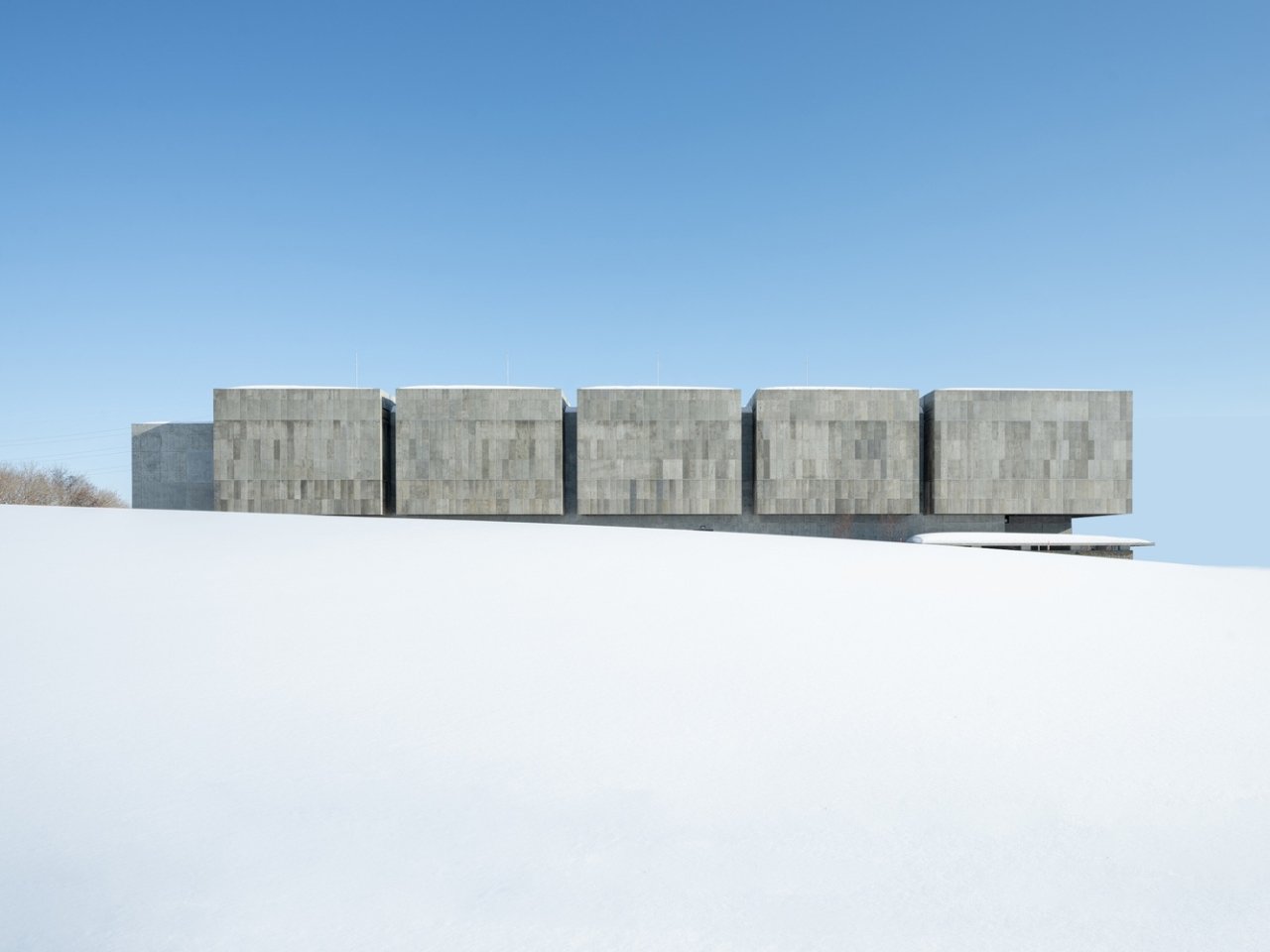Here’s something you don’t hear every day: a data center in Ishikari, Japan that was completed in 2024 is using Hokkaido’s freezing winter air and renewable energy to run completely emission-free. Not just low emission or carbon neutral through offsets, but legitimately zero emission in real-time operation.
The Zero Emission Data Center (ZED ISHIKARI) sits in Ishikari city on Japan’s northernmost island of Hokkaido, where temperatures can plunge to minus 5 degrees Celsius in winter. Instead of fighting this cold with conventional air conditioning, TAISEI Design Planners Architects & Engineers embraced it as a free cooling system. The location was chosen specifically because the Ishikari Bay New Port industrial park has a “100 percent renewable energy area” commitment which requires all companies who build in the area to power their facilities with renewable energy.
Designer: TAISEI Design Planners Architects & Engineers (Photos by Katsumasa Tanaka)
What makes this facility brilliant is how it leverages geography and climate as infrastructure. From October through May, when temperatures stay consistently low, the data center “can be fully operated without backup air conditioners” by simply blowing that icy Hokkaido air through the server rooms. Traditional data centers gulp massive amounts of electricity to keep their servers from overheating, but ZED ISHIKARI essentially has a natural refrigeration system running for more than half the year.
The building’s design treats the entire structure as one large air handling system rather than installing expensive ductwork throughout. Cold air flows in through strategically placed ventilation systems in the ceilings and walls, absorbs heat from the servers, and gets vented back out. That expelled heat isn’t wasted either. Heat from the machines is channeled to systems that keep roads around the facility ice free, solving two problems with one elegant solution.
When natural cooling isn’t enough, the site is connected by a private powerline to nearby solar and wind power plants that each provide 2MW of power to the data center. KCCS, the company operating the facility, has also partnered with a biomass plant to ensure every kilowatt comes from renewable sources. ZED ISHIKARI has established its own electricity supply and demand control system that utilizes storage batteries and AI technology to match carbon-free power on an hourly basis, making it the first data center in Japan to achieve 24/7 carbon-free operation.
This approach isn’t just good for the planet. Compared to its Tokyo data center, the operator “reduced power use by around 40% by locating it in a cold climate”. That’s a massive operational cost saving on top of the environmental benefits. And given that data centers are massive energy consumers, particularly as AI and cloud computing demand skyrockets, finding ways to reduce their power consumption is becoming urgent.
Japan’s Environment Ministry is betting big on this model. They’re subsidizing up to 50% of the cost of building zero-carbon data centers or upgrading existing facilities as part of their climate initiatives. The government recognizes that lifestyle changes and digital transformation have resulted in surging power use, and data centers are one of the major energy consumers they need to address. What’s particularly clever about ZED ISHIKARI is that it doesn’t rely on futuristic technology or massive capital investment in experimental systems. Instead, it works with what’s already there: cold air, wind, sunshine, and biomass. The facility opened on October 1, 2024, proving that zero-emission data infrastructure isn’t some distant dream but an achievable reality right now.
This project shows how thoughtful design and location choices can turn environmental challenges into solutions. While most of us will never visit a data center, the servers that power our streaming, cloud storage, social media, and AI tools live somewhere. Projects like ZED ISHIKARI prove those servers don’t have to come with a carbon cost, especially when you’re willing to build them where winter isn’t something to fight against, but something to harness.
The post This Japanese Data Center Uses Snow and Wind to Stay 100% Green first appeared on Yanko Design.

